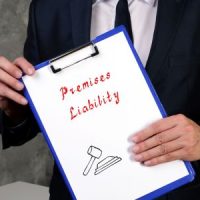Proving Negligence Using Different Sources in Premises Liability Cases

In a typical slip and fall case, to win the case, the victim must show that the property owner didn’t exercise due care. This is usually shown through evidence that the property owner didn’t inspect the premises, or attend to, or fix, or clean, areas that could cause a danger to people on the property, and which the property knew or should have known about in advance.
But there are other ways to show that a property owner breached its duty owed towards people on the property, that go beyond showing what a “reasonable property owner in the same or similar situation would do,” as is the normal negligence standard.
Laws, Ordinances and Regulatory Agency Rules
One way is to try to identify a statute, rule, or regulation that may have been broken. And that sometimes is easier than it sounds. Between federal laws, state laws, and even local, municipal ordinances, there are more laws that regulate businesses than you may think.
Add onto that state and federal regulatory agencies (such as OSHA), and the thousands of laws and regulations they pass on a regular basis, we well as the state administrative laws (such as state building codes), and you can often find some law, or some code, that the property owner may have been breaking.
Negligence Per Se
When you do find such a law, rule or code, you get the benefit of a possible jury instruction presuming negligence, under a negligence per se theory. Even if you don’t get such a presumption from the court, the existence of the law or code or rule that was broken, can give energy and fuel to a case that otherwise may be lacking any “smoking gun.”
Individual Industries
Aside from all of these governmental regulations, are industry specific safety standards. It may be safe to operate one way in one industry, but completely unsafe to do things that way in another industry. Many industries work with chemicals or machinery or heavy objects or large crowds, or any number of unique aspects.
Standards in the industry may not be “laws” that have to be followed, but they are evidence that the Defendant may be negligent. If something is an industry standard, there’s probably a reason why: to keep people safe.
Policies and Procedures and Internal Manuals
You can even use a company’s own policies and procedures, or safety manuals, or employee handbooks.
These internal corporate documents can often serve as an admission of liability: why would a company tell employees to operate one way for safety’s sake in a policies and procedures manual, and then tell you there was nothing wrong when those same policies and procedures were broken?
You may even find that the company’s own safety standards have been routinely ignored or broken; evidence of past patterns of ignoring safety standards or internal procedures, can be powerful and persuasive if they can be admitted into court.
Call the Boston personal injury lawyers at The Law Office of Joseph Linnehan, Jr. today at 617-275-4200 for help if you have been injured on someone else’s property.
Sources:
plaintiffmagazine.com/recent-issues/item/the-right-way-or-the-lazy-way
mass.gov/info-details/occupational-safety-and-health-program-information
